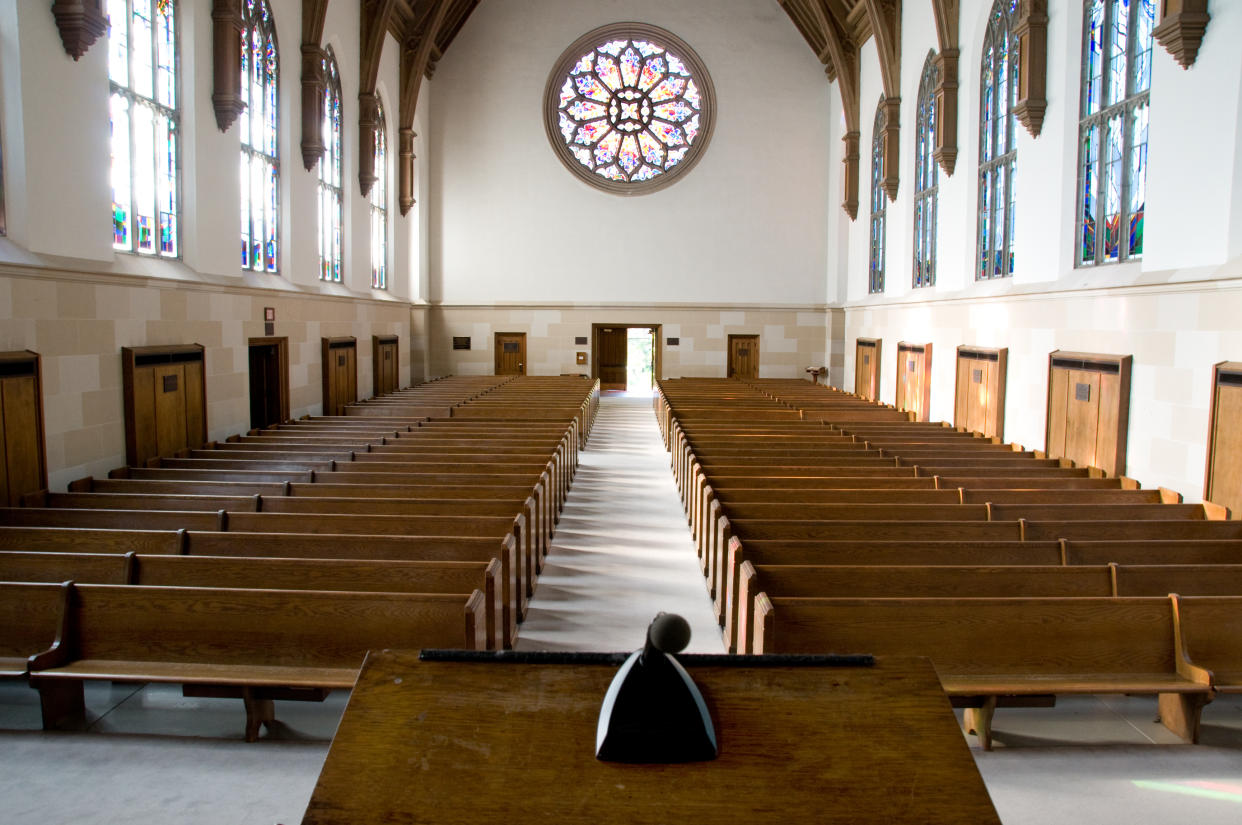Infectious disease expert and seminary student warns about resuming religious services too soon: 'Church is not a building'

As states begin the slow process of reopening, the question of when to allow religious services remains complicated. Although some states are making religious exceptions for social distancing and beginning to allow small gatherings, others are firmly opposed to congregating. In a report released this week, the Centers for Disease Control and Prevention suggests that holding off for longer may be best.
Dr. Gregory Poland, an infectious disease expert at the Mayo Clinic — who, coincidentally, is also midway through seminary school — agrees. “People have a hard time understanding this, but while there is community transmission, asymptomatic people will spread it,” says Poland. “It only needs an opportunity to do so.”
The CDC’s report bolsters this concept. Published in the organization’s Morbidity and Mortality Weekly Report, it details a series of gatherings at an Arkansas church from March 6 to 11 that led to a “high COVID-19 attack rate” both among the congregation and beyond. Out of the 92 attendees, nearly 40 percent (35 people) ultimately tested positive for COVID-19; three of them died. Another 26 cases of the virus, and an additional fatality, were traced back to the church from the community.
The infections were spread through a variety of events over the course of multiple days, including a three-day children’s event, a buffet-style meal and a Bible study.
The Arkansas church is far from the only one where a cluster of cases has appeared. In South Korea, 48 percent of coronavirus cases (more than 5,000) have been traced back to Shincheonji Church of Jesus, where an infection broke out in February. Clusters have also been traced to two Mother’s Day services in Northern California, a funeral in Chicago and several masses in Houston. Weddings in Australia, Jordan and New Zealand — the last of which led to the death of the groom’s father — have furthered community spread as well.
Poland says it’s important to note that this isn’t just occurring in religious services. “This is not unique to a church or choir practice,” he says. “I could show you a birthday party, I could show you the Italian-American family that had 12 people at a dinner and [four] are now dead. It's nothing peculiar about the environment or setting.”
In March, the CDC released interim guidance stating that “large events and mass gatherings” contribute to the spread of the virus, including festivals, parades, concerts, sporting events and weddings. As of this week, the organization has said that person-to-person transmission remains the main route of the virus’s spread, which can occur through respiratory droplets — even from asymptomatic people.
While experts are still studying the percentage of asymptomatic carriers, a study published Monday in the Journal of the American Medical Association suggests the number may be high. In it, researchers from the University of Southern California performed antibody tests on a sample of people in L.A. County and determined that an estimated 4.65 percent of residents there — or 367,000 adults — likely had COVID-19 antibodies by April. The number proved exponentially higher than the 8,430 known cases of COVID-19 in L.A. County at the time of testing (April 10).
Poland says the study is the perfect way to capture why religious services may be dangerous. “It's the simple point that people are really having a hard time understanding that because someone doesn’t look sick — because somebody is asymptomatic — that doesn’t mean they aren’t spreading the virus,” he says.
The CDC advises in its newest report that states explore “modifying” their activities; Poland says this can vary by region. “If you’re in rural Kansas and there are no community cases, then fine, have church, have a birthday party, have a meal at a restaurant,” says Poland. “But when you’re in a community where transmission is still occurring, this is the norm.” He says individuals can ask themselves a simple question: “Is there evidence of community transmission? If there is, I don’t think you should be crowding together.”
The infectious disease expert, who calls himself “bi-vocational,” notes that religious services, which hold a special significance for many people, aren’t the only circumstances where the risk of spreading COVID-19 is high. And as a seminary student himself, he knows that the inability to congregate is difficult. But he suggests focusing on the larger concept of community until things are safe.
“The church is not a building, the church is the people,” says Poland. “You can practice your faith — as many are — with live-streaming events, with Zoom Bible studies, etc.”
For the latest coronavirus news and updates, follow along at https://news.yahoo.com/coronavirus. According to experts, people over 60 and those who are immunocompromised continue to be the most at risk. If you have questions, please refer to the CDC’s and WHO’s resource guides.
How to maintain your physical and mental health during the pandemic
Taking care of a loved one with COVID-19? Here’s how to stay healthy
Q&A with Dr. Kavita Patel: How to keep your family safe and maintain your mental health
Read more from Yahoo Life
What it’s like to homeschool a child with autism during the pandemic: 'We are doing the best we can'
Want daily lifestyle and wellness news delivered to your inbox? Sign up here for Yahoo Life’s newsletter.


